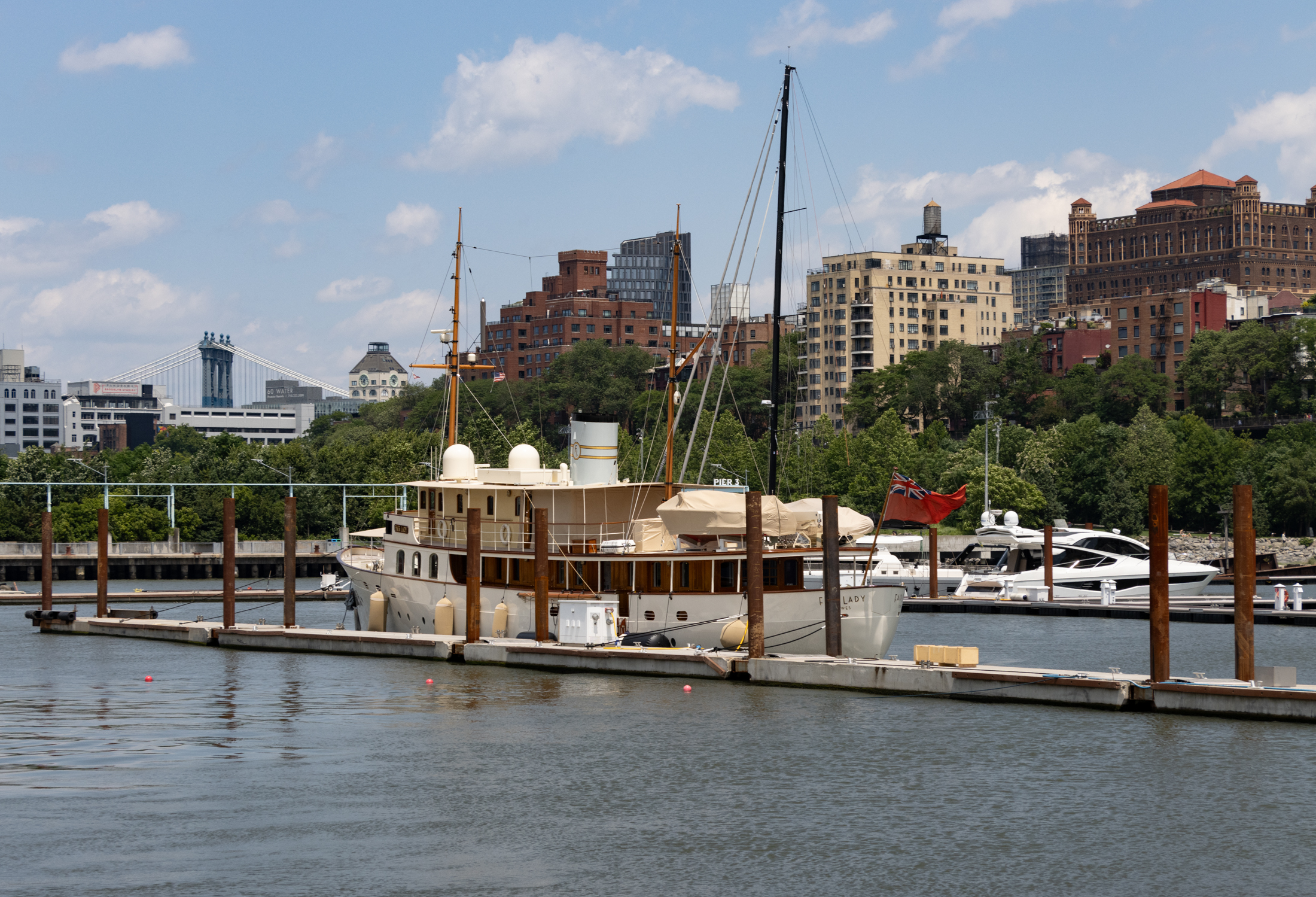Busted Down on 14th Street...
Despite having had a house in a landmark district for five years, the owner of 470 14th Street in Park Slope couldn’t be bothered to play by the rules when she decided to spruce up the exterior of her 1892 William Hawkins-designed townhouse earlier this year. Now, after the fact, she’s having to go back…
Despite having had a house in a landmark district for five years, the owner of 470 14th Street in Park Slope couldn’t be bothered to play by the rules when she decided to spruce up the exterior of her 1892 William Hawkins-designed townhouse earlier this year. Now, after the fact, she’s having to go back to LPC to try to get approval for the unauthorized windows and paint job. While they’re at it, they should take a look at that door. It doesn’t exactly scream “original!”
December 18, 2007 Agenda [LPC] GMAP





I used to live in the building next to the pink house, and while I didn’t hate it, I would never do that to a brownstone.
When they repainted, they definitely used a completely different color – it isn’t just the old color in a not-yet-faded version. It is much more offensive than the old pink color, and now it really is an eyesore.
I link the pink house. We need more of them. Many, many more. Breaks up the monotony.
4:43, “We have white windowframes on our limestone house. We didn’t choose them, the seller did, but we like them, our rooms are absolutely brightly sunfilled, so that’s that on the issues as far as we’re concerned. I would not want brown or black windowframes in my interior.”
Nobody is disputing white window frames on a limestone – light stone, light frames. On a brownstone though, white windows are tacky.
One last thing, brown exterior frames doesn’t mean brown interior ones. I replaced my windows two years ago on my brownstone. They are dark brown on the outside and white on the inside.
I think that people who live on landmarked blocks should not be allowed to wear tighty whiteys, only darker shades.
1:38 Condolences. My neighborhood Landmarking is really a trojan horse for down zoning. There are Fedders buildings all over the place, nearly all home depot replacement windows, little of the working class housing architectural that was here 30 years ago. The neighbors, old and young, want to freeze time at an idealized historical period no one really wants to name.
LPC does serve a purpose, irrespective of what class the people now moving into landmarked neighborhoods are. At the time LPC started designating these areas, NYC was in bad shape, and many areas were not stable, and no I’m not referring to wealthy as stable, simply stating a fact that one who was here in the early 70’s will recall.
That said, LPC doesn’t always get it right, and can be troublesome. Several houses on my block, including mine, were flagged for having bronze aluminum replacement windows, after having had them for almost twenty years. They were all put in by people who didn’t know any better, well before LPC policy well known to many people in the areas designated.
In any case, they insisted that a couple of houses on the block had a certain color cornice, and insisted that if the owners were planning to paint the cornice that they use that color. In actual fact, both owners had grown up in the houses and their families had been there since the 1930’s, and they insisted that the color LPC had in mind was never on the cornice. They were too intimidated to put up much of a fight, and used the proscribed color. On one of my trips to the Municipal Archive to research my own house, I looked up the two houses in question, and while the 1939 tax pictures that are used by LPC for reference were of course black and white, the cornices of the two houses was clearly the middle grey the owners remembered, and not the pale creamy yellow LPC instructed them to use.
In our case, LPC initially said that when we removed the aluminum capping around the windows and repainted the wood brick mould that it would have to be a light color, based on their research of nearby blocks. However, the 1939 photo clearly showed that the window moldings were black, and the various people living on the street back to the late 1920’s remembered them as being black. We negotiated the issue based on the facts, and agreed on a dark bronze color that comes close to the original effect.
Despite the time and cost of the restoration, overall I would say that it certainly hasn’t hurt the look and feel of the house and the block. There is no perfect right answer, and everything about city living is a negotiation….
how come its okay for the building next door to have white frames? the windows look very similar.
as for the landmarks comment by slick at 1:58, all i can say is: ????????
what scrutiny do you propose? landmarks does not care if you are ‘helping the neighborhood,’ or if your house is ‘super pretty.’ they care that the details and proportions of repairs and developments are architecturally appropriate to the ‘landmarked condition.’
if you are proposing a subjective scrutiny only for owners/developers who bought recently, that sounds illegal. its not really grandfathering building conditions: its grandfathering PEOPLE. (weird weird weird). and what criteria other than historical appropriateness would you propose? i really don’t think any one person can say that a new development is definitively attractive or non-attractive.
well, maybe they can in russia in 1958.
Not enough Slope Bashing on this thread. Disappointing.
Think of the landmarks commission as a strict fifth grade teacher who has heard every excuse in the book a thousand times.
You don’t have to like her, but YOU MUST OBEY.